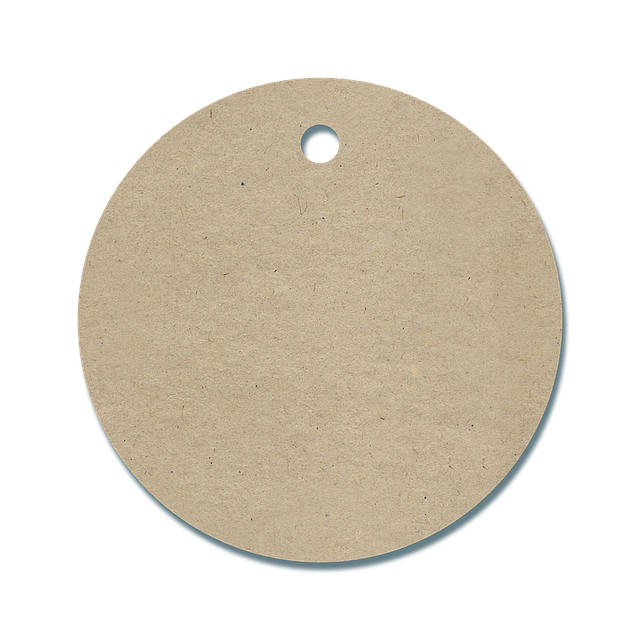Bristol Tag Removal clinics provide professional solutions for skin tags, a common benign skin growth. These clinics offer various removal methods, including surgical excision, cryotherapy, ligation, and natural remedies like apple cider vinegar (ACV). ACV works by dehydrating the skin tag, cutting off its blood supply, which leads to detachment. The process involves applying diluted ACV topically with a cotton ball or gauze, covered by a bandage, for 15 minutes daily until the skin tag naturally sheds. While home remedies like ACV can be attractive due to their non-invasive nature, it's crucial to approach them with caution to avoid infection, scarring, or skin damage. For safe and effective treatment, individuals should consult with healthcare professionals, especially since professional services at Bristol Tag Removal are designed to ensure the best outcomes with minimized risks. Residents in Bristol considering a home remedy for skin tags are encouraged to consider the potential complications and to weigh the benefits of professional medical removal options available at local clinics like Bristol Tag Removal.
Considering the curiosity surrounding at-home skin tag removal, this article delves into the efficacy of using apple cider vinegar (ACV) as a natural treatment. Known colloquially as the Bristol Tag Removal method, ACV’s application for this purpose is rooted in its acidic properties that can induce controlled decomposition. We’ll explore the nuances of skin tags, examine the scientific rationale behind employing ACV, and provide a detailed guide on executing this treatment safely. Join us as we navigate the potential benefits and pitfalls of using ACV for skin tag removal, ensuring you are well-informed before embarking on this process.
- Understanding Skin Tags and Their Removal Options
- The Science Behind Apple Cider Vinegar as a Skin Tag Treatment
- Step-by-Step Guide to Using Apple Cider Vinegar for Tag Removal (Bristol Tag Removal Method)
- Safety Considerations and Potential Side Effects When Using Apple Cider Vinegar for Skin Tags
Understanding Skin Tags and Their Removal Options

Skin tags are benign, often harmless skin growths that can appear on various parts of the body, such as the neck, armpits, and groin. They are composed of collagen, ducts, fat cells, and fibrous elements surrounded by a thin layer of skin. While generally painless and non-cancerous, individuals may choose to remove skin tags for cosmetic reasons or if they become irritated by clothing or jewelry. There are several methods for skin tag removal, including surgical excision, cryotherapy, ligation, and natural remedies. Among these alternatives, some individuals explore home treatments like the application of apple cider vinegar, which has been anecdotally reported to induce the natural fall off of skin tags. In Bristol, where there is a growing awareness and demand for effective tag removal solutions, clinics like Bristol Tag Removal specialize in both medical and non-invasive procedures. These establishments offer tailored advice and treatment plans based on the size, location, and number of skin tags an individual has. For those seeking a home remedy, applying apple cider vinegar diluted with water directly to the skin tag can cause it to dry up and eventually drop off over time; however, this method should be approached with caution as it may lead to scarring or infection if not done correctly. It’s always recommended to consult with a healthcare professional before attempting any form of removal to ensure safety and efficacy.
The Science Behind Apple Cider Vinegar as a Skin Tag Treatment

Apple cider vinegar (ACV) has gained attention in various natural health circles as a potential remedy for skin tag removal, with clinics like Bristol Tag Removal specializing in this treatment. The acetic acid present in ACV is believed to dehydrate skin tags by cutting off their blood supply, leading to their eventual falloff. This process begins when ACV is applied topically to the skin tag using a cotton ball or gauze. The acetic acid in the vinegar creates an acidic environment on the skin’s surface, which can cause the skin tag to darken and dry out over time. This change triggers the body’s natural healing response, prompting the skin tag to separate from the surrounding skin before it naturally detaches.
The efficacy of ACV in treating skin tags is supported by its composition of acetic acid, which is known for its antimicrobial properties. These properties can help prevent infection during the removal process, which is a common concern when dealing with at-home remedies. Additionally, the natural components found in ACV, such as beta-carotene and potassium, work synergistically to promote healthy skin regeneration once the skin tag is removed. While the science behind this treatment is clear, it’s important to approach its use cautiously. Skin sensitivity, scarring, or infection are potential risks when using ACV for skin tag removal. Therefore, it is recommended to dilute the vinegar with water and apply it only under proper guidance, such as that provided by professionals at Bristol Tag Removal, to ensure safety and effectiveness.
Step-by-Step Guide to Using Apple Cider Vinegar for Tag Removal (Bristol Tag Removal Method)

When considering natural home remedies for skin tag removal, the Bristol Tag Removal method stands out as a popular and accessible option. This technique utilizes the properties of apple cider vinegar to safely and gradually remove skin tags. The process begins by applying a small amount of medical-grade apple cider vinegar onto a cotton ball or pad. Carefully apply this soaked material directly onto the skin tag, ensuring that the surrounding skin is protected from direct contact with the vinegar. It’s important to use a bandage to cover the area and secure it in place, preventing the vinegar from spreading onto healthy skin.
Leave the apple cider vinegar in place for about 15 minutes each day. After this time, gently wash the affected area with water and mild soap, then pat dry. Repeat this application daily until you notice the skin tag starting to darken and become lighter in color. This indicates that the skin tag is responding to the treatment. As the skin tag dries up, it will eventually fall off on its own. The Bristol Tag Removal method is a patient process, and results may vary depending on the size and type of skin tag. Always exercise caution and consider consulting a healthcare professional before attempting any home remedy for medical conditions.
Safety Considerations and Potential Side Effects When Using Apple Cider Vinegar for Skin Tags

When considering the removal of skin tags using apple cider vinegar, it’s crucial to approach the procedure with caution. The acetic acid present in apple cider vinegar can cause irritation or chemical burns if misapplied or left on the skin for too long. To minimize risks, individuals should perform a patch test before applying the vinegar directly to the skin tag to ensure there is no adverse reaction. Additionally, one should dilute the vinegar with water and apply it only to the skin tag and not surrounding healthy skin to prevent damage to the surrounding area. It’s also important to avoid using apple cider vinegar on sensitive areas or areas with poor circulation, such as the neck or face, as these areas may be more prone to complications.
Applying apple cider vinegar for skin tag removal is not without potential side effects. These can include redness, swelling, and infection at the site of application. If a person experiences severe pain, persistent bleeding, or if the skin tag becomes infected, they should discontinue use immediately and consult a healthcare professional. It’s also worth mentioning that the effectiveness of apple cider vinegar for skin tag removal can vary from person to person. For those in Bristol seeking a non-invasive method, it’s advisable to consider professional tag removal services like Bristol Tag Removal, which offer safe and medically approved procedures. These services ensure proper treatment and minimize the risk of side effects, providing a more predictable outcome than at-home remedies with apple cider vinegar.
In conclusion, skin tags are benign growths that can be managed through various methods. Among these, the Bristol Tag Removal method using apple cider vinegar has garnered attention due to its simplicity and accessibility. This article delved into the nature of skin tags, explored the scientific rationale for using apple cider vinegar, and provided a detailed guide on how to apply this home remedy safely. While the process is straightforward, it’s crucial to approach any at-home treatment with caution, understanding the potential risks and side effects involved. Proper execution according to guidelines can lead to satisfactory results, making it a viable alternative for those seeking to remove skin tags without medical intervention. As always, consulting with a healthcare professional before attempting any new treatment is advisable.
